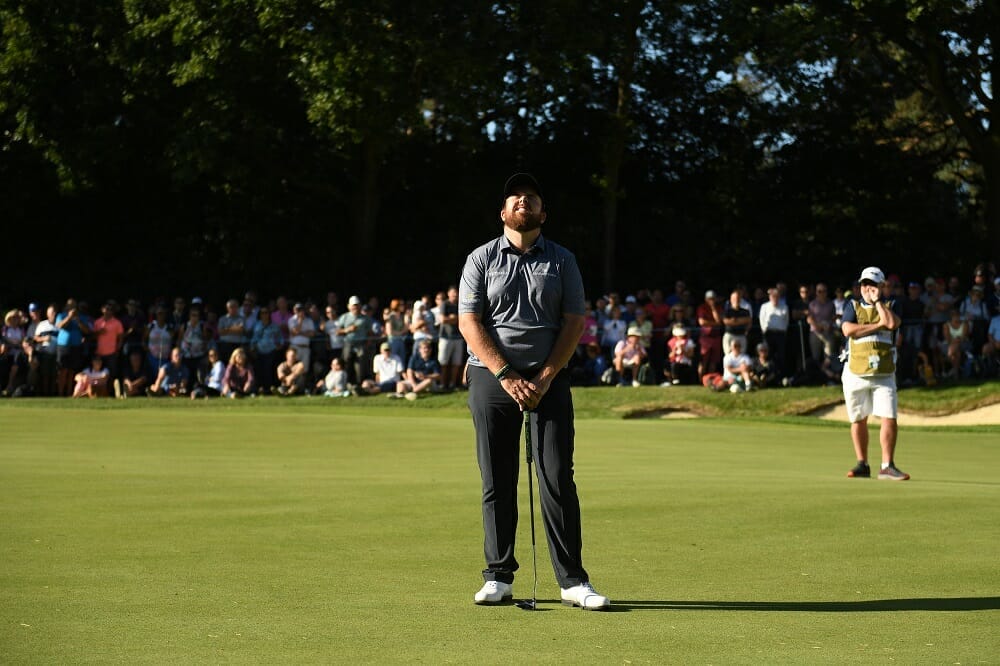So you’re watching the golf on TV. As usual, it’s an endless barrage of shots raining down on the pin, inevitably followed by holed putts. Then the director randomly cuts to an also-ran, six holes ahead, on the tee of a par 3. “Hmm,” you think. “I’m about to watch a hole-in- one.” If it doesn’t go in, it lips out.
Watching our heroes on TV can be great entertainment. But, it can also create a problem.
Consider that for the most part, all we see is great shot after great shot. The quality on display is at times mesmerising. Watch enough TV golf and you could be forgiven for thinking the game is actually not that hard.
Except, of course, TV golf isn’t real golf. Week after week we are shown the best players in the world, enjoying the best weeks of their year. And even then, the coverage is edited so we only get to watch their best shots of the round. The reason Tour pros seem to play fantasy golf is because that is exactly what it is.
So why does this matter? Because when we are fed a constant diet of exceptional golf, it gives us a false notion of what is achievable. It encourages us to assume this type of golf is the norm rather than the exception. And it increases our discontent with the state of our own games. Ultimately, it can become harder for us to accept and deal with the poor shots we will inevitably play during a round.
Golf, as we know only too well, is a game of misses. Dealing with the failure and disappointment is one of the game’s biggest challenges, and one of its most underrated skills. The golfer who can place a poor shot in its proper context and move on from it develops tenacity and creates the best possible conditions for a successful recovery. If you don’t possess this ability, you will always be one or two shots away from disaster.
The first step to being able to do this is to gain an accurate perspective on the inherent difficulty of the game. For this, let’s get back to our heroes of the PGA Tour, and the truth-revealing stats generated by its data capture system, ShotLink.
Let’s consider the average distance at which a Tour pro is just as likely to miss a putt as hole it. What would you say… 10ft? 12ft? In fact, it’s just 7ft 10 inches.
Let’s just review that stat for a moment. The best players in the world, putting on the best greens in the world, are more likely to miss an eight-footer than hole it.
Now that’s a very different picture from the yards of putts we see poured in every week.
Let’s look at the long game. Do you think the average PGA Tour player hits every green in regulation? In fact, he misses between six and seven a round, averaging 11.7 GIR. It’s a similar story for fairways found, where the average is around 60 per cent. Again, this hardly tallies with the robo-golf we are watching.
These are stats that tell us even the best in the world have their fair share of miscues. When you see the game in this context, you can perhaps start to give yourself more of a break when your shot misses its mark.
You can take this principle beyond an assessment of the pro game to an analysis of your own. Take for example greens in regulation. How many do you hit on average? If you don’t know, find out by monitoring your performance for a month. Let’s suppose the figure is five. Once you register this as your typical performance, you can start to see a missed green as a more likely outcome than a hit green, and so more acceptable. It can also get you into the useful habit of trying to beat your average total, which creates a far more effective state of mind than fretting about the 12 or 13 you’ve missed.
Back this up with a second great way to develop the ability to move on from a bad shot – accepting the fact that, however poor the shot was, there is a possibility that your next one will be excellent.
When you are playing poorly, accepting this possibility can undoubtedly be hard. Nevertheless, it remains a fact. Every golfer, whatever their handicap, is capable of hitting a good shot. It is possible that your next effort will be good. Staying open to this one, simple thought allows you to hit on the mental trick all golfers need – a maintenance of optimism, allied to a real-world acceptance of outcome. Blend the two and, no matter how you are playing, you will increase your chances of the next shot being better.
























Leave a comment